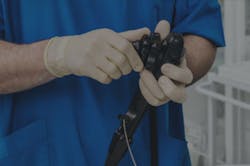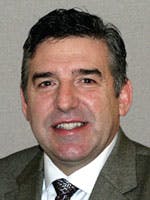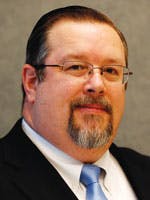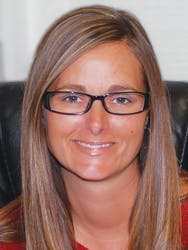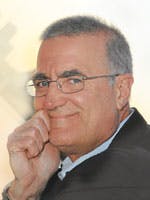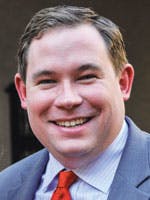SPD faces myriad challenges to comply with IFUs
Sterility assurance experts cite the need for improved education to help sterile processing professionals comply with manufacturer instructions-for-use (IFUs) guidelines, but other priorities either dampen the desire or simply get in the way.
“The nature of the work performed in CS/SPD means that patient and personnel safety is paramount, which is why it is so important that the CS/SPD technician clearly and thoroughly understand their roles and responsibilities in order to be most effective,” said Charles Hughes, Vice President, Infection Prevention Consulting Services, Crosstex/SPSmedical, a Cantel Medical Company. “Each CS/SPD staff member comes to the job with a different level of knowledge and competency. So consistency of knowledge becomes important to the overall functioning of the department. A good way to accomplish this is through continuing education and certification. Certification is a means by which staff are encouraged to continue their education, since CEUs are necessary each year to maintain certification.”
But that can be challenging to achieve, according to Kisha Miller, MHA, Founder and CEO of Circle of Care, Fresno, TX.
“Many facilities are struggling to keep up with the demand for education because much of the learning is on the job training,” Miller said. “In addition, technicians are usually spread so thin that they are covering multiple roles in order to meet day-to-day needs. Technicians are focused on tending to the immediate needs of daily operations, and therefore IFU compliance may not be feasible due to the multiple complex steps involved. For example, there are over 100 steps listed in the IFU to reprocess a flexible endoscope.
Human resource issues abound
“Facilities haven’t captured the data to justify additional positions to fulfill roles, such as a quality or educational coordinator whose responsibility would be to validate competencies, set up routine in-services, and hold professionals accountable for compliance with certification maintenance,” Miller continued. “The industry on average does not pay sterile processing professionals well, yet technicians must seek out obtaining certification and maintaining continuing education on their own. Unfortunately, once technicians obtain certification, many facilities don’t increase their wages, and if they are increased, it’s very minimal compared to other allied health professionals working in the perioperative department.
“SPD professionals must take ownership in their own learning, and be responsible to take the initiative to get plugged into professional organizations, and invest in themselves,” she added. “Most facilities cannot afford to supply dedicated preceptors who can provide undivided attention to new technicians.”
SPD pros also must battle the pressure, according to Rob Cripe, Vice President, North American Sales and Marketing, Integrated Endoscopy, Rancho Santa Margarita, CA.
“A key challenge was identified in the ‘human factors’ study published in Gastroenterology Nursing — three-fourths of the employees surveyed reported feeling pressured to work quickly when reprocessing endoscopes,” Cripe said. “Some acknowledged skipping steps or doing them more quickly than they liked because of this pressure — a reality that may stem from lack of adequate inventory combined with the need to keep surgical schedules on track in busy hospital ORs and ambulatory surgery centers. In addition, many endoscopes are processed in alternate settings outside hospital central processing departments, where staff may not be as thoroughly trained, may have other responsibilities beyond instrument reprocessing, and may turn over more frequently.”
Labor concerns definitely impact quality, emphasized Richard W. Schule, MBA, FAST, CST, FCS, CRCST, CHMMC, CIS, CHL, AGTS, Director, Clinical Education, STERIS Corp.
“This problem is not a union or wage problem though some will disagree,” Schule noted. “This is about the organization, more specifically, upper management’s commitment to resource management. In a quality management system (QMS) environment, the organization shall determine and provide the resources needed to implement the QMS and to maintain its effectiveness. ANSI/AAMI ST 79, Section 6.2 speaks to personnel performing work affecting product quality shall be competent on the basis of appropriate education, training, skills and experience. More importantly, it is about ensuring that personnel are aware of the relevance and importance of their activities and how they contribute to the achievement of quality objectives.”
Certification, training, standards, recognition and wage increases should help improve the process, according to Donna Swenson, President and CEO, Sterile Processing Quality Services Inc., Stickney, IL, and a former SPD director.
“Currently there is no nationally recognized standard of education that is required to become a sterile processing technician,” Swenson noted. “ANSI/AAMI ST 79 does recommend that technicians should be certified, which I agree with. What is further needed though is a recognized academic curriculum that all sterile processing technicians should successfully complete before they start working in sterile processing. I know of some programs that do exist but these programs are not universally recognized, much less required before one can work in sterile processing.”
Payback hurts
Compensation remains a sore spot.
“Wages are also a concern for sterile processing technicians,” Swenson continued. “There is a huge variance in what individual hospitals are willing to pay for sterile processing technicians. Wages seem to vary from barely above minimum wage to an hourly rate in the mid $20s. There is obviously a disconnect somewhere when the wages vary by such a large amount. If we expect to reduce HAIs then the wages of sterile processing technicians will need to be addressed.”
Swenson argued that SPD techs deserve much more recognition and understanding for the critical roles they play.
There is also a need for better recognition of how important the sterile processing technicians’ job is and the impact that the technician has on patient safety,” she said. “It can be seen that this is not well understood when in the recent reporting on the Detroit Medical Center (DMC) it was stated by a member of hospital administration that no patients were placed in an unsafe situation because of the dirty instruments that had made it to the OR. This is untrue! These patients are being placed in an unsafe situation and this needs to be recognized. A dirty instrument at the point of use should be considered a sentinel event and needs to be investigated every time that this happens. This is needed to ensure that we get to the root cause of this problem and then address what is actually causing the problem. What should not happen is to blame the sterile processing technician. This is a multi-faceted problem and will take the input of many different stakeholders to address and fix.”
Brianne Flesher, Flexible Scope Division Manager, Mobile Instrument Service & Repair Inc., Bellefontaine, OH, advocated for certification.
“We support certification of technicians to reprocess scopes using a national standard that is managed by one of the many associated trade groups,” Flesher said. “It is our understanding that turnover is a challenge area in SPD. With ever-changing guidelines and best practices, experience and knowledge are not only needed but required. Reports indicate that the current national average wages for an SPD tech is $14.35/hour or $29,857 annually. These low wages aren’t conducive to retaining talented, dedicated individuals. Addressing low wages may as a result, rectify turnover and produce longevity in personnel and better SPD outcomes.”
What’s good for manufacturers…
Labor issues notwithstanding, SPD still needs to verify their cleaning processes, Swenson urged.
“In reality the IFU provided by the device manufacturer is only a guideline for the reprocessor,” she said. “Following the IFU can sometimes result in a device that is not clean, is not disinfected or is not sterile, even if the IFU was followed exactly. There are many variables that the device manufacturer does not control that will impact whether or not a particular IFU actually produces the intended result, such as cleaning water quality and detergent dose, steam sterilization steam quality and purity. The reprocessor really needs to validate the process used in their facility.”
And why not? Manufacturers have to do it.
“The manufacturer provides a validated process for the device but to ensure that a process actually works requires that the process be validated in the individual machine with the actual conditions that will be used at that facility. ANSI/AAMI ST79 Comprehensive Guide to Steam Sterilization and Sterility Assurance in Health Care Facilities recommends that product quality assurance (PQA) testing be done on the devices actually sterilized in a particular facility. PQA testing is process validation that is performed on full exposure time sterilization cycles. Similar testing should be done for cleaning processes.”
Focusing on the process doesn’t mean you should overlook the product, which is affected by the wear-and-tear, according to Integrated Endoscopy’s Cripe.
“Reusable endoscopes degrade over time due to use, handling and reprocessing,” Cripe said. “Lenses get cloudy or scratched and light bundles break to name just a few examples. This issue impacts image quality, as well as repair costs and inventory availability.”
That’s why his company makes and markets a single-use endoscope for arthroscopic procedures. “Single-use endoscopes provide the opportunity for facilities to maintain an inventory of sterile backup endoscopes that can be tapped when a reusable scope isn’t available due to delays in reprocessing, lack of adequate inventory, when an endoscope is found to be unusable at the outset of surgery, or is damaged or contaminated during surgery,” Cripe said. “It can also be used with any camera system with a universal coupler eliminating the need for any additional equipment. Facilities also may benefit from having access to single-use endoscopes as front-line scopes for high-risk patients in order to remove any chance that a compromised patient may be infected by an inadequately reprocessed device.”
Quartet of doom
Healthcare-acquired infections and surgical site infections generally can be traced to four potential causes, indicated Healthmark’s Director of Education, Stephen Kovach. They are a break in sterile technique, poor patient health, unclean instruments and unsterile instruments.
“We, the healthcare community, can control three of the four factors,” he insisted. “Interestingly, to reduce and continue to improve we must understand these causes and work towards reducing them as a team. As a group we must be sure all the parts are working together, and only then will you have success. It is not simply one of these aforementioned reasons, but a combination of those factors because each facility is unique to itself and the issues it faces. Sure, you can always find some similarities when comparing facilities. But, it still boils down to teamwork and the uniqueness of that specific facility – who and what they do with the resources given them and the support they receive to make changes to improve.
“If you do not totally understand your process and the impact a medical device has on your process from the pre-cleaning, cleaning to assembly to sterilization and storage, you will fail,” Kovach continued. “You get that information from the IFU as well as your standards and guidelines. You can have all of the IFUs and standards in the world, but if you do not have common sense, critical thinking skills, knowledgeable certified staff, the right tools to do the job, good attitude, quality improvement programs, resources and support, failure will always be part of the equation. Following the IFU is key to success, but there are other parts to make that success long lasting and complete and really that is what you want.”
Talking tech for learning
As educational demands for SPD techs ramp up, computer-aided and computer-based design, online curricula and even smartphone apps surely must play a larger role, right?
People all learn differently, according to Kovach, so all modes of education to reach all employees are fair game.
“Departments now have four different types of employees that all learn differently,” he said. “Flexibility is the key then to educate all of those different types of learners. Management who understands this concept will be able to reach all of their staff. It is definitely not one-size-fits-all. We learned this with our Crazy4Clean.com educational games.”
Pentax Medical-Hoya Corp.’s Garrett concurred. “Adult learning is a complex science as people learn in different ways, so we must appeal to as many of the senses as possible to truly impact practice change,” he said.
“The use of computer-based learning is a valuable tool, but in many instances it becomes more of a regulatory compliance activity versus a true engaging learning experience. With the large presence of smartphones in the market, it would only make sense to use apps and other digital tools to communicate important messages about medical device hygiene, patient safety and infection prevention and control. These types of digital tools can also be used to directly reach the patient and provide important education to them about their procedure or diagnosis.”
Culturally, people rely more on personal electronic devices to manage their fast-paced lives, so capturing educational material in a convenient format makes information much more assessable, according to Circle of Care’s Miller. Therefore, the role of technology makes compliance much more realistic regarding sterility assurance and quality control metrics”
About the Author
Rick Dana Barlow
Senior Editor
Rick Dana Barlow is Senior Editor for Healthcare Purchasing News, an Endeavor Business Media publication. He can be reached at [email protected].
